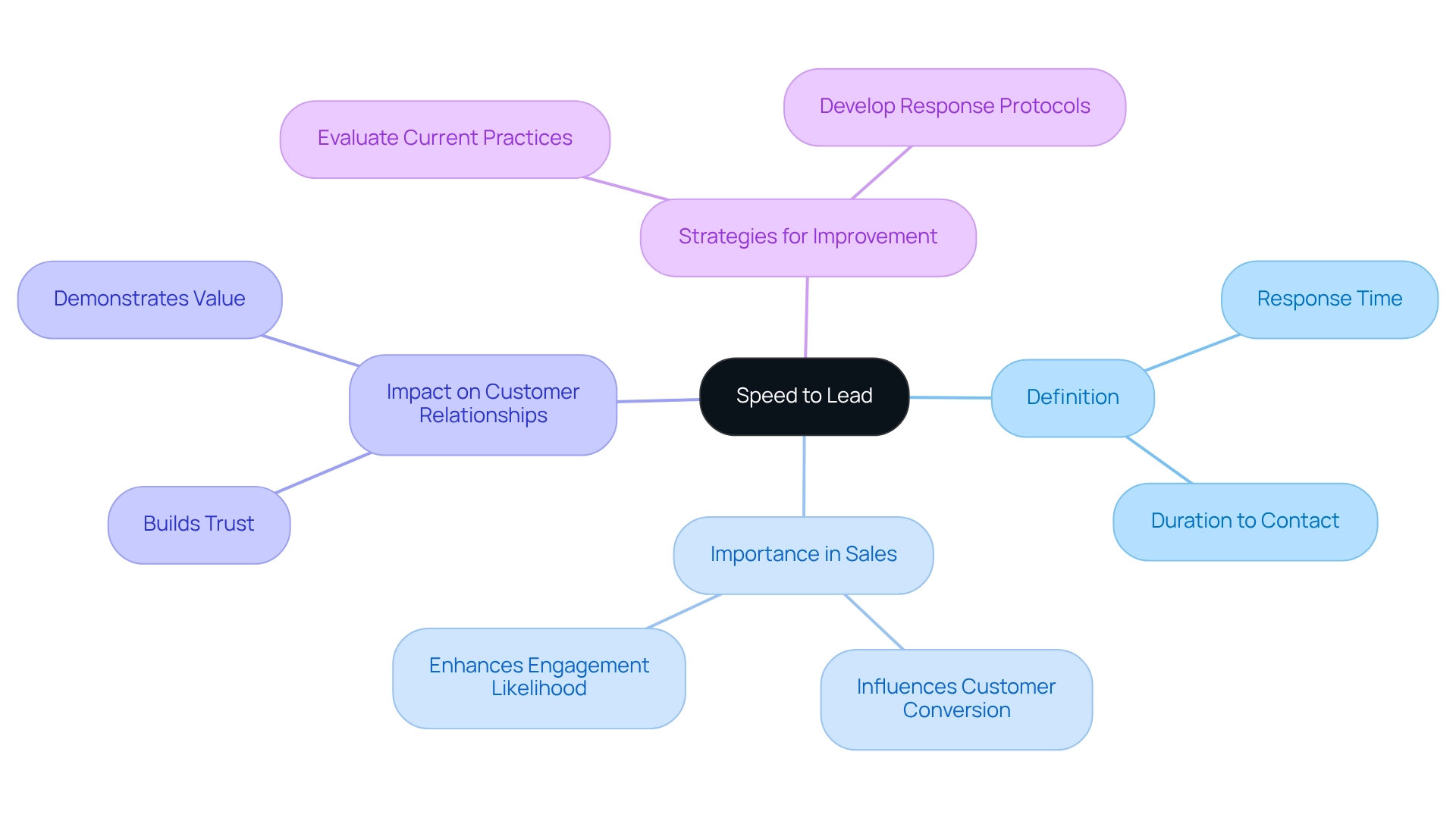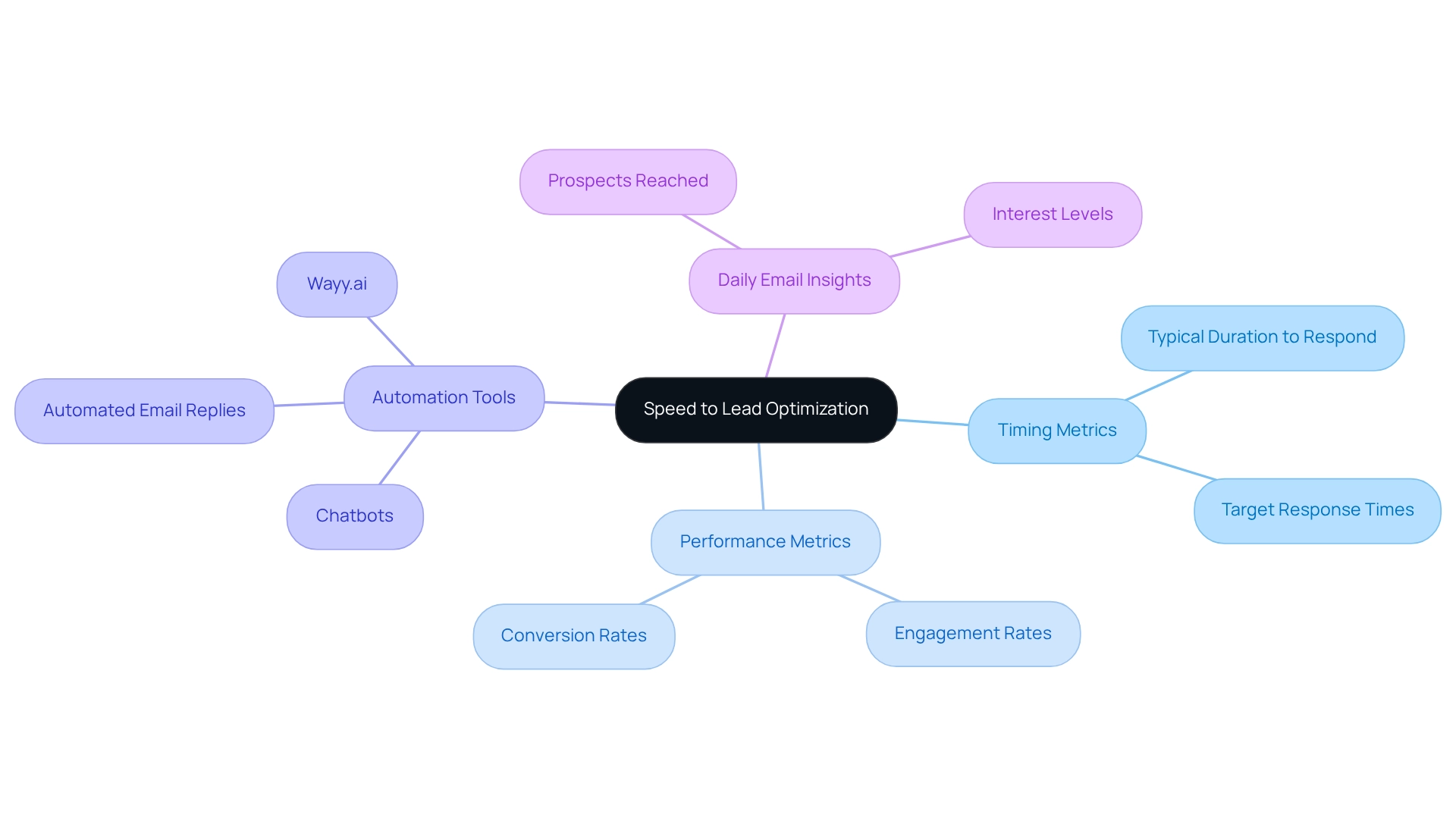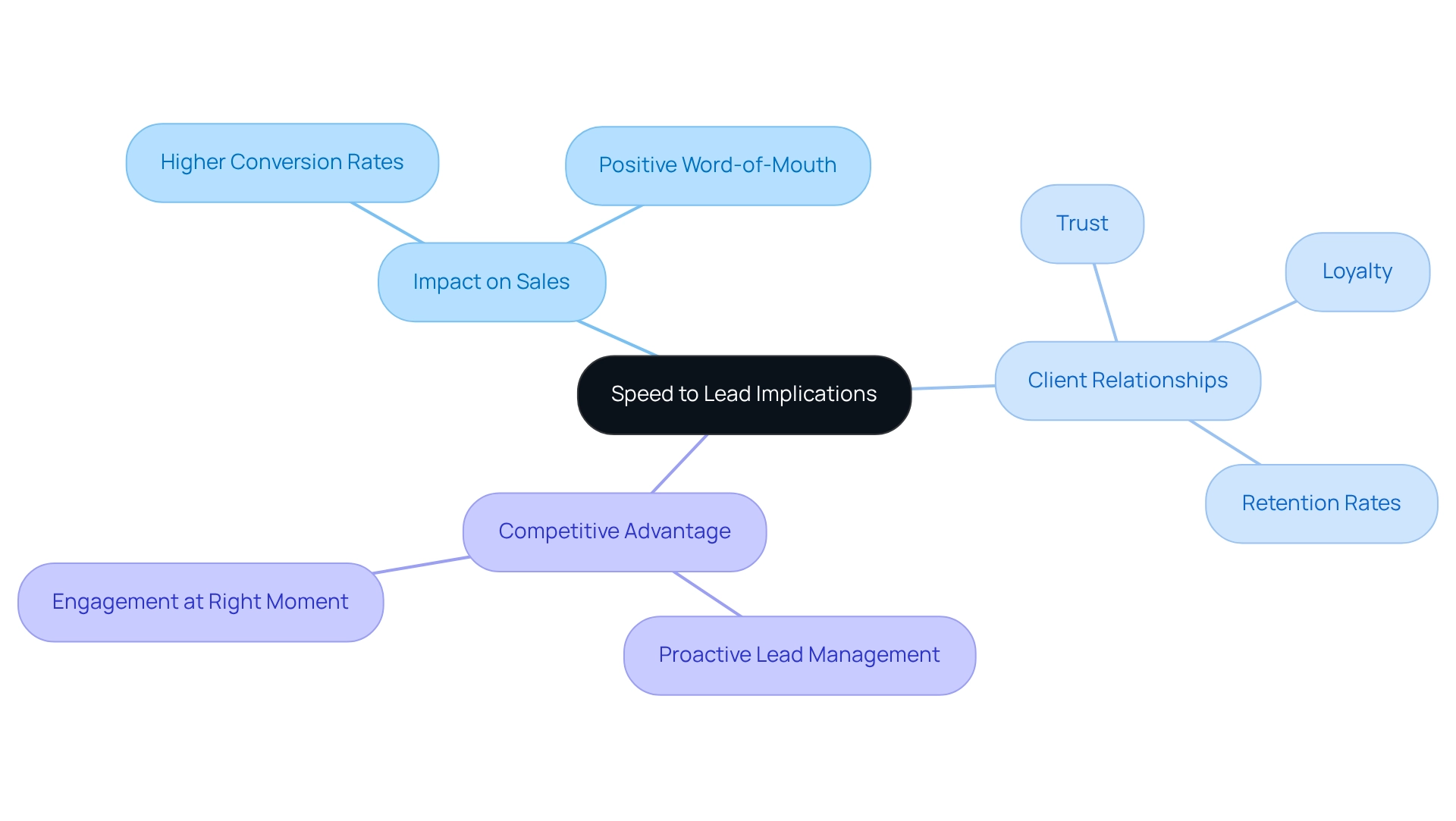Overview
In today's fast-paced business environment, the concept of 'speed to lead' is more important than ever. This term refers to the time it takes for a business to respond to potential customers after they express interest. We understand your challenges, and it's crucial to recognize that quicker response times can significantly boost customer engagement and conversion rates. Research shows that prospects contacted within five minutes are much more likely to engage, which fosters trust and strengthens customer relationships.
Imagine a potential customer who fills out a form on your website, eager to learn more about your services. If you respond promptly, you not only capture their attention but also demonstrate that you value their interest. This simple act can make a world of difference in how they perceive your business.
Ultimately, prioritizing a swift response can empower your business to build lasting connections with customers. Together, we can achieve success by embracing the importance of timely communication. Remember, every moment counts in creating a positive impression and nurturing those vital relationships.
Introduction
In today's world, where consumer expectations are soaring, the speed at which businesses respond to potential customers can truly make a difference in securing a sale. This concept, known as speed to lead, is a vital metric that measures how quickly a company reaches out to a lead after they've expressed interest in a product or service.
Research indicates that immediate responses can greatly enhance engagement, making it crucial for organizations to understand and optimize their speed to lead. By doing so, they can improve conversion rates and elevate customer satisfaction.
As competition intensifies, those who excel in swift communication are not only able to attract new customers but also foster loyalty in an increasingly crowded marketplace.
Together, we can navigate these challenges and achieve success.
Define Speed to Lead: Understanding the Concept
Speed to lead, often referred to as response time, indicates the duration it takes for a business to contact a potential customer after they show interest in a product or service. This metric is not just a number; it holds significant importance in sales because it directly influences the chances of turning prospects into loyal customers.
Have you ever considered how a quick response can make a difference? Research shows that replying within those crucial first moments can significantly enhance the likelihood of engagement. This highlights the importance of speed to lead in contact as a vital component of effective sales strategies.
Imagine a potential customer who has just shown interest in what you offer. They are likely excited and eager to learn more. By responding swiftly, you not only acknowledge their interest but also demonstrate that you value their time and needs. This nurturing approach can foster trust and connection, which are essential in building lasting relationships.
As you reflect on your current practices, think about ways you can enhance your response time. Together, we can develop strategies that empower your business to thrive in a competitive landscape.

Contextualize Speed to Lead: Importance in Business Operations
In today's fast-paced business environment, we understand that speed to lead is more critical than ever. Businesses that prioritize speed to lead in their responses to inquiries often find themselves experiencing increased conversion rates and enhanced client satisfaction.
Have you ever considered how quickly responding to a prospect can make a difference? Research shows that the speed to lead is crucial, as prospects reached within five minutes are significantly more inclined to engage than those approached later. This sense of urgency not only enriches the customer experience but also provides your business with the speed to lead against competitors who may delay their responses.
Together, we can embrace this approach to not just meet but exceed your clients' expectations.

Explore Key Characteristics: Metrics and Optimization Strategies
Understanding the essential traits of speed to lead is crucial for your business. Timing metrics assess the typical duration required to reach out to a prospect after their inquiry. By utilizing automation tools, such as chatbots or automated email replies, you can enhance this process and ensure prompt responses that your prospects appreciate.
Setting clear performance metrics—like target response times—along with monitoring engagement rates can help you identify any bottlenecks in your outreach strategies. For instance, companies that leverage AI-driven platforms like Wayy.ai can streamline their outreach efforts with a one-click sales playbook and targeted outreach. This approach ensures timely follow-ups that can significantly improve your speed to lead and conversion rates.
Daily email insights from Wayy.ai provide you with key metrics, revealing how many prospects were reached, who showed interest, and how your conversion rates are improving. These insights can be invaluable in helping you refine your sales performance. Remember, together we can achieve success, and with the right tools, you can overcome the challenges you face in your outreach efforts.

Analyze Implications: Impact on Sales and Customer Relationships
The implications of speed to guide extend far beyond mere sales figures; they play a significant role in shaping client relationships. Have you ever considered how a timely reply reflects a company's commitment to service? It fosters trust and loyalty, which are invaluable in today’s competitive landscape. Companies that excel in their responsiveness often see higher customer retention rates and benefit from positive word-of-mouth referrals.
As competition intensifies, the ability to speed to lead becomes a key differentiator. This capacity allows businesses to achieve speed to lead by connecting with prospects before they explore alternatives. For instance, those who embrace a proactive approach to lead management—utilizing tools that track purchase intent signals—can improve their speed to lead by engaging potential clients at just the right moment. This strategic timing maximizes the chances of conversion, ultimately paving the way for your business’s success. Together, we can navigate these challenges and thrive.

Conclusion
In today’s competitive landscape, the concept of speed to lead is not just important; it’s essential for businesses that want to thrive. By understanding and optimizing the time it takes to respond to potential customers, companies can significantly enhance their chances of converting leads into loyal clients. When responses are immediate, engagement rates improve, and overall customer satisfaction rises. This highlights the importance of prompt communication as a crucial element of effective sales strategies.
To streamline the lead response process, incorporating automation tools and establishing clear performance metrics can be incredibly beneficial. This allows businesses to react swiftly and efficiently. Utilizing advanced technologies, like AI-driven platforms, empowers organizations to refine their outreach efforts, ensuring that no potential customer is left unattended. This strategic approach not only boosts conversion rates but also strengthens customer relationships, fostering trust and loyalty.
Ultimately, in a fast-paced business environment, speed to lead is more than just a metric; it’s a vital differentiator that can set your company apart from competitors. By prioritizing rapid response times, you can capture leads when they are most interested, paving the way for increased sales and sustained growth. Embracing this principle will enhance not only your immediate performance but also cultivate long-term success in customer retention and brand reputation. Together, we can achieve success by understanding the importance of speed to lead.
Frequently Asked Questions
What is speed to lead?
Speed to lead, also known as response time, refers to the duration it takes for a business to contact a potential customer after they show interest in a product or service.
Why is speed to lead important in sales?
Speed to lead is crucial in sales because it directly influences the chances of converting prospects into loyal customers. A quick response can significantly enhance the likelihood of customer engagement.
How does responding quickly to potential customers affect engagement?
Responding quickly acknowledges the potential customer's interest and demonstrates that the business values their time and needs, which can foster trust and connection.
What impact does speed to lead have on building customer relationships?
A swift response helps in building lasting relationships by nurturing trust and connection with potential customers, making them more likely to engage with the business.
What can businesses do to improve their speed to lead?
Businesses can reflect on their current practices and develop strategies to enhance their response time, empowering them to thrive in a competitive landscape.




